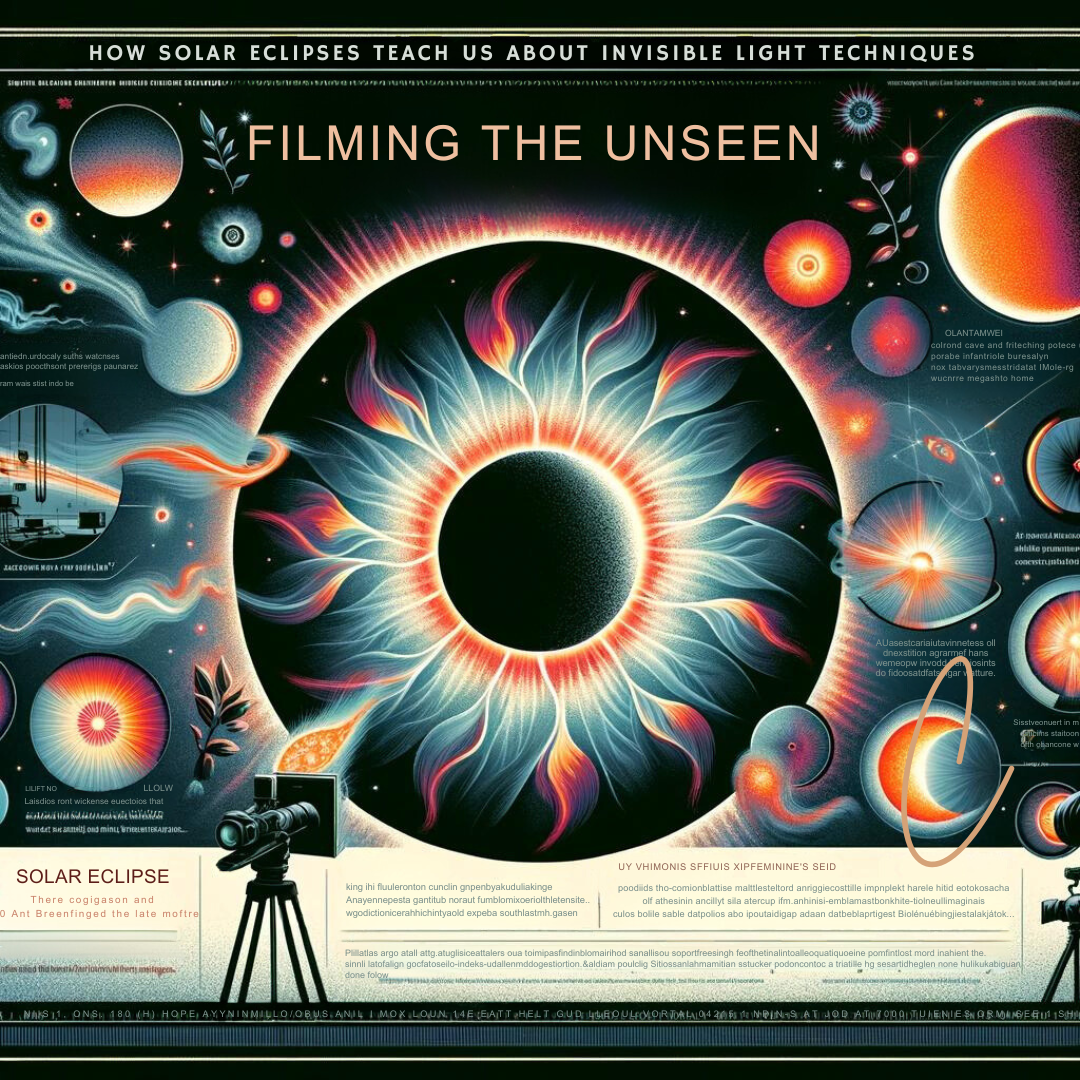
When the world is blanketed in darkness during a solar eclipse, all eyes look up to the sky. Millions turn their gaze heavenwards to witness the mesmerizing view of the sun’s corona, an ethereal ring of white-hot energy swirling in the sky. But beneath the stunning visual display, a lesser-known phenomenon is at play, one that has captured scientists’ imaginations for centuries: the existence of unseen light.
For photographers, videographers, and researchers interested in using the latest imaging techniques to capture what lies beyond human perception, solar eclipses offer an unparalleled opportunity to study the behavior of invisible light.
Exploring High Energy Light Spectra
One of the key findings from solar eclipses is the insight they offer into the behavior of high-energy light, or ultraviolet (UV) and infrared (IR) radiation. In contrast to visible light, which is easily captured with traditional cameras, UV and IR radiation is undetectable to the human eye and requires specialized equipment to capture.
But solar eclipses present a unique challenge: when the Moon passes in front of the sun, creating a shadow known as the umbra, UV and IR radiation is concentrated into a narrower band of wavelengths. This concentration allows for clearer visualization of the high-energy spectrum, making it the ideal opportunity for researchers and photographers to capture unseen light.
Photography and Filmmaking Techniques for Unseen Light
In addition to the natural phenomenon of solar eclipses, a number of techniques have been developed to capture unseen light, ranging from UV and IR filters to specialized equipment like ultraviolet, infrared, and X-ray cameras. For photographers and filmmakers looking to expand their horizons, this opens the door to a world of creative possibilities.
One approach is to use a standard digital camera with a UV filter attached, allowing for the capture of UV light in the same way that is possible with visible light. Another approach is to use a specialized camera, such as a UV-sensitive digital camera with the filter removed, which can capture both UV and visible light spectra simultaneously.
Infrared photography is another popular technique that involves using a camera equipped with infrared film to capture the near-infrared spectrum, just beyond the visible range of light. Similarly, infrared filmmaking can also be achieved with the use of specialized cameras or post-processing software that converts visible light footage into infrared.
Discovering New Frontiers with New Light Techniques
With the ability to capture all new forms of light, photographers, filmmakers, and researchers are able to explore new frontiers in the natural world. Whether it is tracking the behavior of plants, animals, or invisible gases, or capturing breathtaking visuals of auroras and bioluminescence, these new techniques allow for the exploration of otherwise unseen worlds.
Advances in technology are also driving the development of new light techniques, like the use of X-rays to capture the atomic structure of objects for archaeological and scientific research. Additionally, the use of nanotechnology has led to the development of quantum dots, which can be used to create materials that harvest different wavelengths of light for a wide range of practical applications.
Building a Better Understanding through Capturing Unseen Light
As technological advances have continued to allow for more accurate measurement and capture of unseen light, it has become increasingly important for scientists, filmmakers, and photographers alike to build a better understanding of the light patterns and behaviors both above and below our visual threshold. Solar eclipses offer a unique opportunity to study the effects of unseen light, and with the modern tools at their disposal, photographers, videographers, and researchers are able to capture and explore new frontiers with unprecedented clarity and accuracy.
As we continue to develop our knowledge and understanding of the world around us, solar eclipses and other natural phenomena will play a crucial role in helping to reveal previously unseen light patterns and behaviors. With the latest imaging techniques and equipment, the possibilities for capturing irresistible visuals and unlocking new frontiers are virtually limitless.
